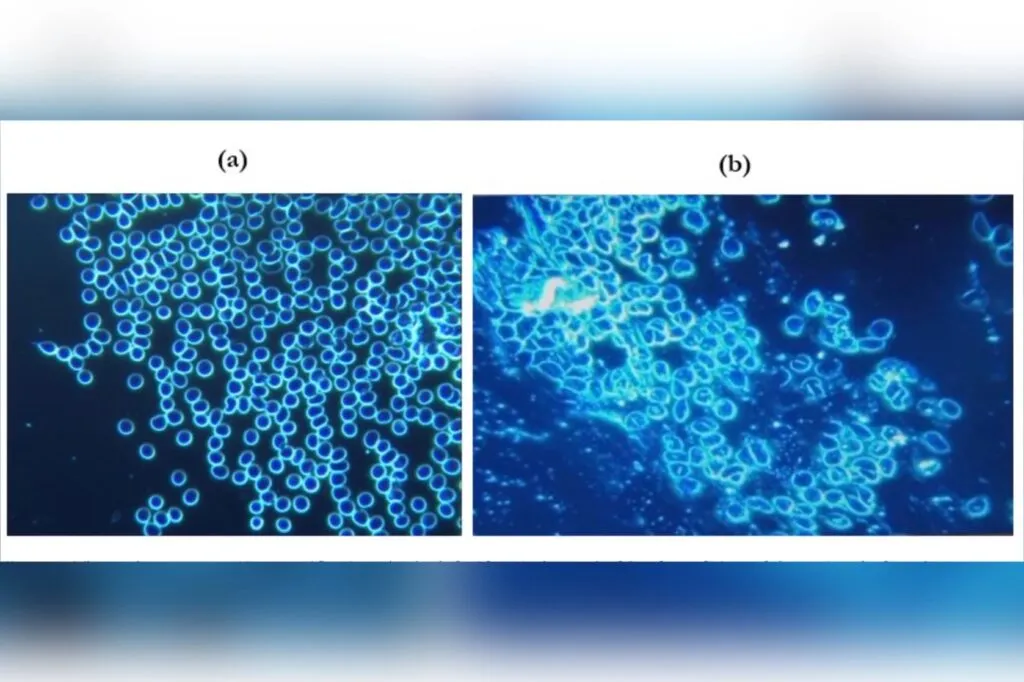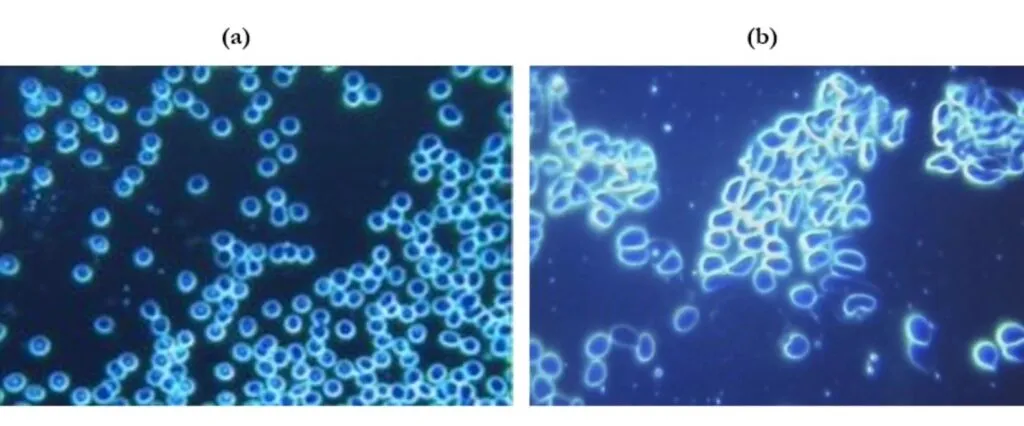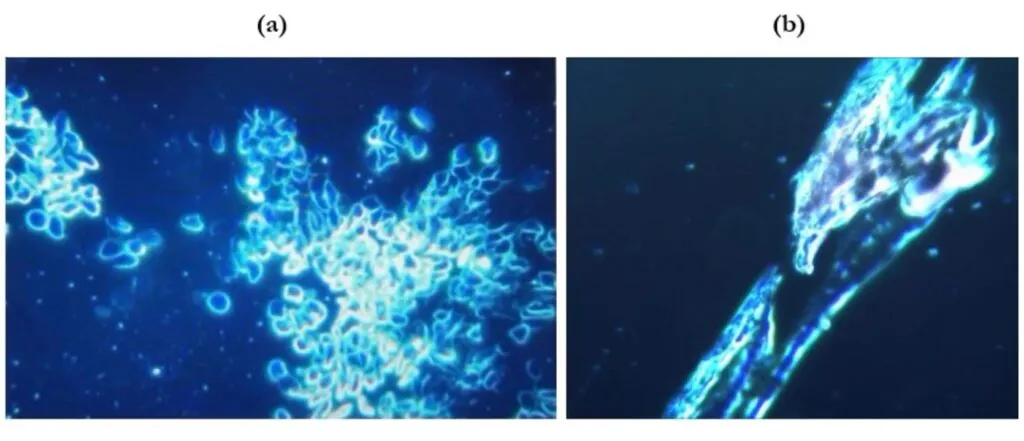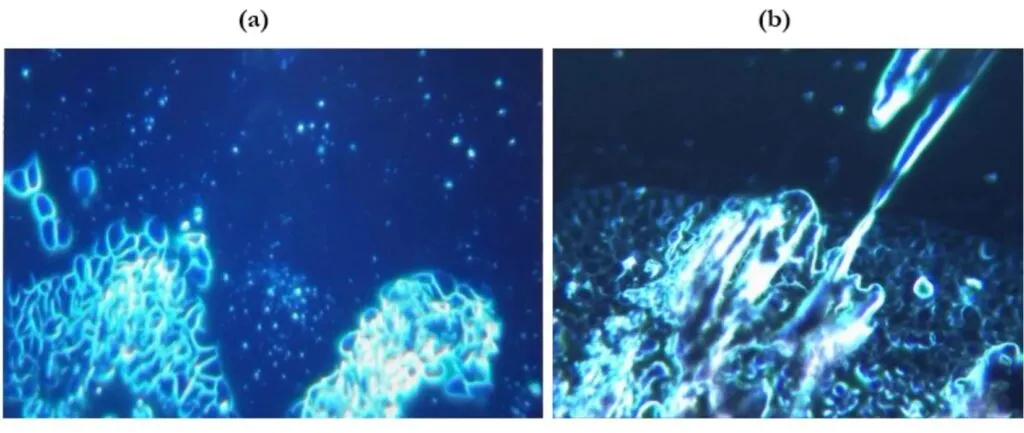A peer-reviewed study in Italy has found that over 94% of jabbed people who experienced side effects had abnormal blood containing metallic substances one month after vaccination.
This new study was published in August 2022 in the open access peer-reviewed journal, International Journal of Vaccine Theory, Practice, and Research (IJVTPR).
Starting in March 2021, three Italian surgeons analyzed peripheral blood, using a single drop from each of 1,006 symptomatic patients who had had at least one mRNA jab.
Thegatewaypundit.com reports: According to the study, “there were 948 subjects (94% of the total sample) whose blood showed aggregation of erythrocytes and the presence of particles of various shapes and sizes of unclear origin one month after the mRNA inoculation.”
Erythrocytes also known as red blood cells contain a protein called hemoglobin, which carries oxygen from the lungs to all parts of the body.
“In 12 subjects, blood was examined with the same method before vaccination, showing a perfectly normal hematological distribution. The alterations found after the inoculation of the mRNA injections further reinforce the suspicion that the modifications were due to the so-called “vaccines” themselves. We report 4 clinical cases, chosen as representative of the entire case series. Further studies are needed to define the exact nature of the particles found in the blood and to identify possible solutions to the problems they are evidently causing,” it added.
“Of the 1,006 subjects, 426 were males and 580 were females and 141 of them received only a single dose of the mRNA experimental injection, 453 got a second dose, and 412 received a third dose. The average age of the 1,006 subjects was 49 years and their age ranged from 15-85. On average, 5.77% of the 1,006 individuals had normal blood samples in spite of their COVID-19 symptoms,” according to the study.
“The remaining 94.23% had abnormal blood samples as illustrated in the 4 cases we selected out of the 12 who were normal before receiving any mRNA injections but were no longer normal afterward. For each case, a drop of blood was drawn by pricking a finger and was analyzed under a ZEISS Primostar orLEITZ Laborlux 12 dark-field microscope. The observation of the blood under an optical microscope in a dark-field took place an average of thirty days after the last inoculation,” the study added.
The three surgeons behind the study—Franco Giovannini, Riccardo Benzi Cipelli, and Gianpaolo Pisano—claim that their findings are similar to those of a study by Young Mi Lee, Sunyoung Park, and Ki-Yeob Jeon from South Korea, titled “Foreign Materials in Blood Samples of Recipients of COVID-19 Vaccines,” but the Italian study has “much larger sample.”
“Our findings, however, are bolstered by their parallel analysis of the fluids in vials of the mRNA concoctions alongside centrifuged plasma samples from the cases they studied intensively. What seems plain enough is that metallic particles resembling graphene oxide and possibly other metallic compounds, like those discovered by Gatti and Montanari, have been included in the cocktail of whatever the manufacturers have seen fit to put in the so-called mRNA “vaccines.”
The surgeons believed that the vaccine makers should provide an explanation as to what is within the shots and why those components are present.
“In our experience as clinicians, these mRNA injections are very unlike traditional “vaccines” and their manufacturers need, in our opinions, to come clean about what is in the injections and why it is there,” they said.
Below are the results of the study:



Case No. 1:
“This individual is a male of 33 years, who formerly was an athlete, apparently healthy before inoculation with an mRNA Pfizer injection. One month after receiving the first dose of the Pfizer “vaccine”, he showed marked asthenia, a constant gravitational headache (i.e., one sensitive to the position and movements of his head and body such that the pain was increased by movement of the head up or down). The headaches were unresponsive to common painkillers. Diffuse rheumatic arthralgia with dyspnea on exertion were noted.” See illustration below:

Case No. 2:
“This case was a woman 54 years old whose symptoms included the drug-resistant severe headache, profound worsening asthenia, sleep/wake rhythm disorders, generalized paresthesia and dysesthesia, psychic manifestations with depressive mood after the second dose of the Pfizer vaccine.” Her blood story is captured below:


You can read the full study here.





